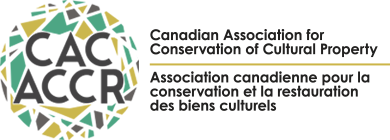J.CAC VOLUME 44 (2019)
Identifying Collections Vulnerable to Disasters: Evidence from Risk Analysis of Rare Events
Recent comprehensive risk assessment projects conducted by the Canadian Conservation Institute have shown that, under certain conditions, risks associated with hazards such as fire, earthquake and tornado rank as priority risks relative to all other risks facing heritage collections. Risk analysis using the ABC Method based on incidence and severity data, or on an expert model that relates specific features and behaviours (control levels) with the degree of damage to the collections, can help identify factors that generate Magnitude of Risk scores categorized as High to Extreme for such events. Flood risk scores at least in the High category if collections are stored below or on grade in locations at risk of overland flooding, storm surge or tsunami. Fire risk falls in the Extreme category for collections in combustible or fire-resistive buildings that lack automatic fire detection or suppression and exhibit poor compartmentation, and in many buildings at the wildland-urban interface. Earthquake is categorized as an Extreme risk in non-seismically stable buildings in regions prone to violent or extreme shaking, or as a High risk when the building is stable but storage and display fittings lack seismic protection in regions at risk of at least very strong shaking. Physical damage due to severe winds would score as a High risk in many building types in regions at risk of Category 3–5 hurricanes or EF3–5 tornadoes even when the chance of a direct hit is small. When such disaster risks are categorized as High to Extreme, mitigation is highly recommended and may be cost-effective. Reducing the likelihood of the hazard may be difficult or impossible; therefore, facility improvements that reduce negative consequences on collections during an event are recommended, in addition to preparations for effective response and recovery.
Download: JCAC44 Karsten